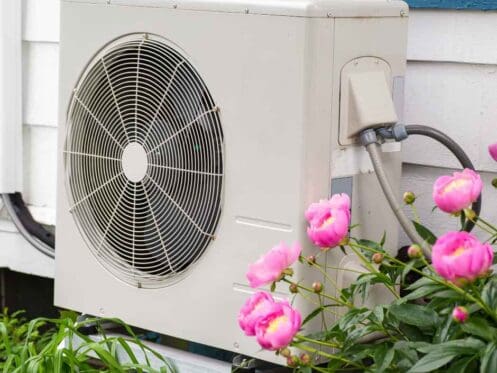During the cold winter months, homeowners rely heavily on their heating systems to keep their homes warm and comfortable. However, there are times when your primary heating system may not be sufficient, and you might need to use emergency heat. In this blog, we will discuss what emergency heat is, when to use it, and whether using emergency heat is bad for your system. By understanding these aspects, you can make informed decisions and ensure your home stays warm and safe during extreme weather conditions.
What is Emergency Heat?
Emergency heat, also known as auxiliary heat, is a secondary heating system that kicks in when the primary heat pump cannot efficiently heat your home. This is typically used in heat pump systems, which operate by transferring heat from the outside air to the inside of your home. When the outside temperature drops too low, the heat pump may struggle to extract enough heat, leading to the need for emergency heat.
Emergency heat usually relies on electric resistance heating, which uses electricity to generate heat directly. This method is less efficient and more expensive to operate than a heat pump, but it provides the necessary warmth during extremely cold conditions.
When To Use Emergency Heat
Extremely Cold Weather
The primary time to use emergency heat is during extremely cold weather when the outside temperature is too low for your heat pump to function efficiently. Heat pumps are generally effective until the temperature drops below 30 degrees Fahrenheit. Below this threshold, the heat pump may not be able to extract enough heat from the outside air, and emergency heat becomes necessary to maintain a comfortable indoor temperature.
Heat Pump Malfunction
If your heat pump malfunctions or stops working altogether, switching to emergency heat can keep your home warm until you can get the heat pump repaired. This can be crucial during winter months when a lack of heating can lead to frozen pipes and other issues.
Defrost Mode
Heat pumps occasionally enter a defrost mode to remove ice buildup on the outdoor unit. During this time, the heat pump may temporarily switch to emergency heat to maintain indoor comfort. This is a normal part of heat pump operation and ensures the system runs efficiently.
Maintenance or Repairs
If your heat pump requires maintenance or repairs that necessitate shutting it down, using emergency heat can provide a temporary source of warmth. This allows you to maintain a comfortable indoor environment while the primary heating system is being serviced.
Is Using Emergency Heat Bad?
Using emergency heat is not inherently bad, but it is less efficient and more costly than using your heat pump. Here are a few considerations:
Higher Energy Costs
Emergency heat relies on electric resistance heating, which consumes more electricity than a heat pump. This can lead to higher energy bills, especially if you rely on emergency heat for extended periods.
Increased Wear and Tear
Regularly using emergency heat can lead to increased wear and tear on your heating system. Heat pumps are designed to be the primary source of heating, and over-reliance on emergency heat can reduce the lifespan of your system components.
Environmental Impact
Since emergency heat uses more electricity, it has a higher environmental impact compared to the energy-efficient operation of a heat pump. Minimizing the use of emergency heat can help reduce your carbon footprint.
Tips for Using Emergency Heat Wisely
To use emergency heat effectively and minimize its drawbacks, consider the following tips:
Monitor Weather Conditions
Keep an eye on the weather forecast and switch to emergency heat only when temperatures are expected to drop significantly. This can help you avoid unnecessary use of emergency heat.
Regular Maintenance
Ensure your heat pump and heating system receive regular maintenance to operate efficiently. A well-maintained system is less likely to require emergency heat and will perform better during cold weather.
Insulate Your Home
Proper insulation can help maintain indoor temperatures and reduce the need for emergency heat. Insulating your home’s walls, attic, and windows can keep the cold air out and the warm air in.
Programmable Thermostat
Use a programmable thermostat to optimize your heating system’s performance. Setting your thermostat to lower temperatures when you’re away or asleep can reduce the demand on your heat pump and limit the use of emergency heat.
Call Charleston Heating & Air
Understanding when to use emergency heat and how to use it wisely can help you maintain a comfortable home during the winter while keeping energy costs and environmental impact in check. Emergency heat is a valuable feature of your heating system, providing a reliable source of warmth during extreme weather or when your primary heat pump is not functioning correctly.
For expert heater repair and maintenance services, contact Charleston Heating & Air today. Our skilled technicians can ensure your heating system is running efficiently and provide the necessary care to keep your home warm all winter long. Don’t wait for a cold snap to find out your heater isn’t working—schedule your maintenance or repair service now!

